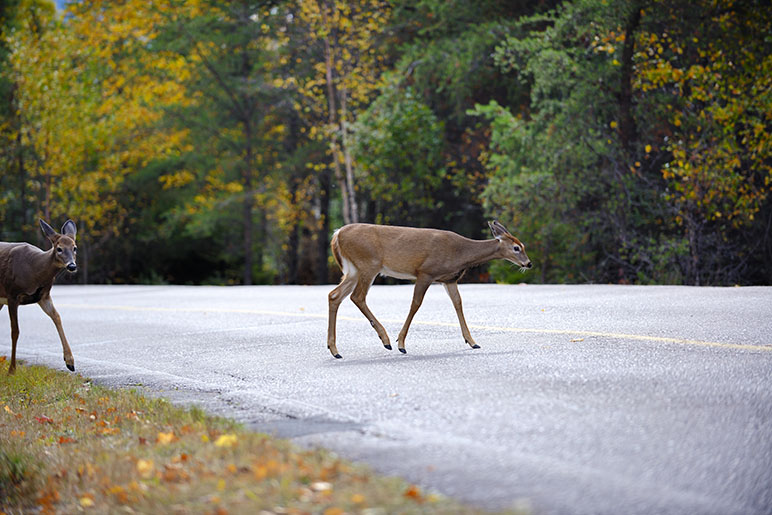
According to Indiana’s Department of Natural Resources (DNR), there are more than 14,000 deer-vehicle crashes every year. Each accident varies in damage and severity. I personally have experienced this unfortunate reality.
In October 2018, I hit a deer while driving home from work. It was dark and I was driving in a rural area. Luckily, I was not going very fast when the deer jumped out in front of my car. The deer just grazed my front bumper, cracking the plastic and leaving the deer unharmed.
My second encounter was not as lucky.
In December 2018, I was driving home from school for the holidays around dusk in a rural area when a deer jumped into the road. The car that was going in the opposite direction from me hit the deer, causing it to bounce off their car and crash on to mine.
Although I was uninjured, I cannot say the same for the deer or my vehicle. The front end had been crushed and the deer, sadly, had to be put down by the DNR. Although both experiences shook me up, I am glad that I had Indiana Farm Bureau Insurance. I had peace of mind knowing that I was covered by what is called, “Other than Collision” coverage, which allowed me to remain calm when speaking with the responding police officer.
Though not always avoidable, I want to provide you with important information about the active deer season, so you can do your best to stay safe on the road.
When is deer season?
Having heard my story, you may be asking yourself when is deer season in Indiana? While deer travel the countryside year-round, they are typically most active during the mating season from October to December—and especially at dawn and dusk. Deer season may end in late December, but in Indiana, you should be on the lookout for deer all year round. Whether you travel in rural or urban areas, there is always a risk of a deer traveling across a roadway.
The county you live in can also affect the likelihood of hitting a deer with your vehicle. Below you will see the list of the top 10 counties with the highest deer population according to DNR’s 2020-21 harvest data.
Quick tips for driving during deer season
Although deer season is upon us, do not worry. If you follow these deer safety tips, you will be set for driving during Indiana’s deer season.
High beams – If you are driving in the dark and you are a safe distance from another vehicle use your high beam lights, or what some people call “brights.” By using your high beams, you will be able to illuminate the deer's eyes allowing you to see exactly where they are
Never swerve – If a deer does jump out in front of your vehicle the safest option is to break, if you can, and hit the deer. Swerving can result in a more severe collision with an oncoming vehicle, powerline pole or other structure.
What to do if you hit a deer?
If you do hit a deer, do not panic; instead, follow these steps.
Do not drive away. If you are able, turn on your hazards and move your vehicle out of the line of traffic and to a safe place.
Contact the local authorities and follow their instructions.
Do not approach the deer. Approaching a wounded animal can be dangerous. It is best to wait for the authorities to come and let them check the deer.
If the deer has died as a result of its injuries, you do have the right to claim the animal for your own use. You will need to discuss it with the on-scene officer and be granted a permit for the deer by DNR or state police. According to the Indiana Department of Natural Resources, you can also donate the deer to the The Sportsmen's Benevolence Fund to distribute to food banks.
Document the accident. If it is safe, take pictures of your vehicle and any damage that has occurred.
After assessing the damage, if your vehicle is unable to be driven and you carry Indiana Farm Bureau Insurance’ Roadside Assistance coverage, then call (855) 205-7085 for help.
Submit a claim to your insurance company.
Remember the most important thing you can do if you hit a deer is to remain calm. Although the experience can be startling, if you remain calm and remember these steps you will be able to handle the situation safely.
Does my auto insurance policy cover hitting a deer?
Hitting a deer is covered by your Indiana Farm Bureau Insurance auto insurance policy under Other than Collision coverage. If you are curious about what your policy does and does not cover, reach out to your local insurance agent for more information.
You can also view your policy and policy details on your online account.